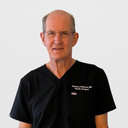I'll try to tell you everything I can, based on your history and these two photos.


